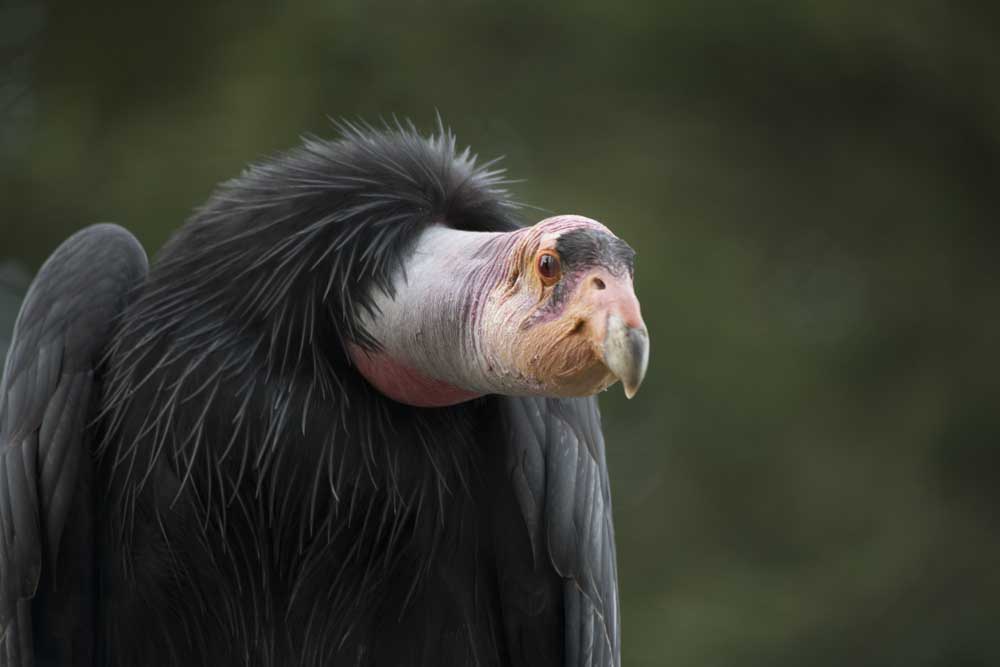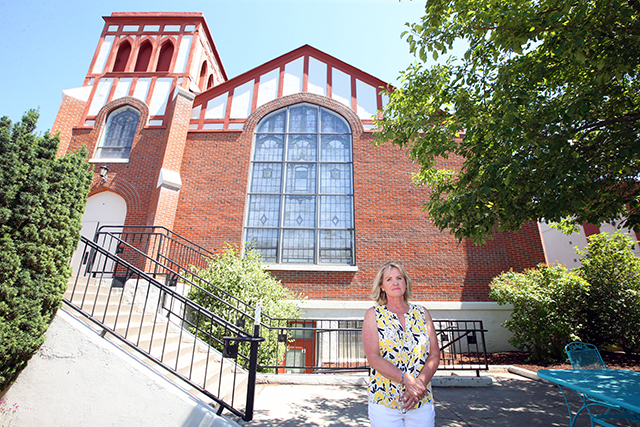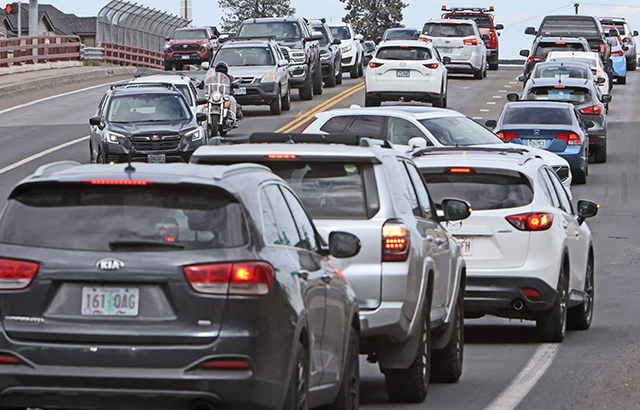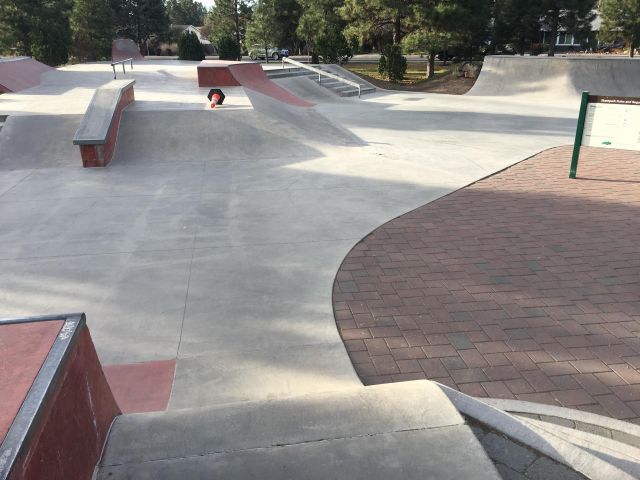What will the Oregon Zoo look like in 15 years? Portland voters will soon decide
Published 2:22 pm Friday, February 2, 2024

- A California condor perches in the Oregon Zoo’s Condors of the Columbia habitat in this undated photo.
Heidi Rahn is in a staring contest with a condor.
It’s a posture — crouched in front of the plexiglass — that you might expect from a young visitor to the Oregon Zoo, not the director. But here she is, locked in with the huge wrinkly-headed bird, as if this is her first time seeing a condor up close.
Trending
The condors at the Oregon Zoo are an undeniable conservation success story. In 1987, only 22 condors remained in the wild. Now, there are more than 500 condors in the world and nearly 100 of those came directly from the Oregon Zoo breeding program in Clackamas County.
The bird that Rahn is gazing at is one that couldn’t be freed over California, so instead, it is part of an exhibit at the zoo in Washington Park, where visitors can wonder at the birds’ massive wingspan and learn about how lead bullets and plastic trash continue to harm the species.
Conservation programs, like condor breeding or a wild elephant program in Borneo or efforts to help sea otters repopulate the Oregon coast, are a big part of the zoo’s work.
And for Rahn, who became director of the Oregon Zoo in 2021 after spending several years working on directing implementation of Metro’s last zoo bond, which voters passed in 2008, the condors are an example of what a zoo can be — educational and entertaining, with real-world benefits for the species on display.
Now, as director, she’s working on a new bond, phase two of that 2008 bond for $125 million, which led to a new veterinary center and expanded habitats for elephants, chimpanzees and polar bears, among other things.
On Thursday morning, during a meeting at the zoo, Metro Council unanimously voted to send the new bond to voters in May. This time, they are asking for $380 million to bring the zoo into the next 15 years.
Trending
Metro Council coordinates a variety of things across the tri-county Portland area. It oversees the zoo, several public cemeteries and a golf course, manages garbage collection and recycling, owns regional parks and operates the Oregon Convention Center, the Portland Expo Center and the Portland’5 Centers for the Arts.
The Oregon Zoo is frequently cited as the most visited ticketed attraction in the state, with roughly 1.5 million visitors a year.
In 2023, expenses for the zoo were $46,089,048 and revenue was $43,181,539. Rahn was the second highest paid Metro employee in 2023 with a salary of $273,261.
The zoo’s 2024 operations budget is $49,065,358 and forecasted revenue is $48,464,639. No bond money would go towards the operating budget or the director’s salary.
Most members of the public who testified supported Metro moving the bond to voters. Many of those testifying work for organizations that support or work for or with the zoo. Several people who testified asked the council not to pass the bond to voters, frequently citing conditions for elephants at the zoo as well as other things, like homelessness and housing, that they believe taxpayers should focus on.
According to officials, the new bond would not raise taxes, so the question for voters won’t necessarily be a financial one but more a question of priorities. Does the Portland area want to support the work of bringing a zoo that first opened in 1888 into the second half of its second century?
The penguins
If the measure does pass, Rahn can tell you what will be one of the first things to change: The penguins. The penguin area was built in 1959. The penguin and tiger areas both date back to when the zoo moved to its current location in the park.
“The animals are fine,” Rahn said, as she led The Oregonian/OregonLive on a tour of the zoo earlier this week, pointing out areas that will be improved and rethought if the bond passes.
“But in the future, we know they’re not going to meet the standards that we have to meet, and it’s already been called out by our accreditation body.”
So the penguins, now consigned to a circular building that smells like fish and is difficult to navigate with a stroller or wheelchair, will get a bigger, more accessible space, with access to fresh air and a more natural beach.
Updating the entire Coastal Shores area of the zoo will also be a priority, with better visitor flow, food, restrooms and even a newly designed carousel.
“This will be a big hub area,” Rahn said, giving people choices when they get into the zoo, and elevators to make it easier to get out.
Making the zoo more accessible is one of Rahn’s big goals for the future of the zoo, along with focusing in on its mission of conservation and animal and staff welfare.
Big summer concerts are gone, Rahn said, because they didn’t align with the mission of the zoo and they were financially too risky. Now the zoo is hosting evening events with local music and animal education.
‘Designing for more extremes’
She sees a future zoo that is easier to navigate, with more places for kids to let off energy and more food options. There will more shelter, both for Oregon’s winter rain and to protect visitors from beating sun in the summer.
“We need to be designing for more extremes, and the shoulder seasons, so that we get people throughout the year,” Rahn said.
Those extremes and the shifting climate are another focus for the future of the zoo and the kind of improvements they hope to make if the bond passes.
“We’re trying to make sure we’re just designing for flexibility down the road,” Rahn said, both so they can switch out species with other zoos if that is necessary and so they can be ready to assist with conservation and species recovery when it’s needed.
And while they work on preventing species extinction on a global level due to climate change and other human-caused factors, they are also focused on making the zoo itself more climate-resilient for the animals and humans who spend their time there.
During Portland’s recent ice storm, the zoo lost power for several days. Emergency power generators paid for by the 2008 bond allowed the zoo to maintain the systems needed to keep staff and animals safe.
The future is almost guaranteed to hold more uncertainty for species in the wild and inside the zoo’s gates. Now, the zoo and Metro have four months to convince voters to invest $380 million in that future.








